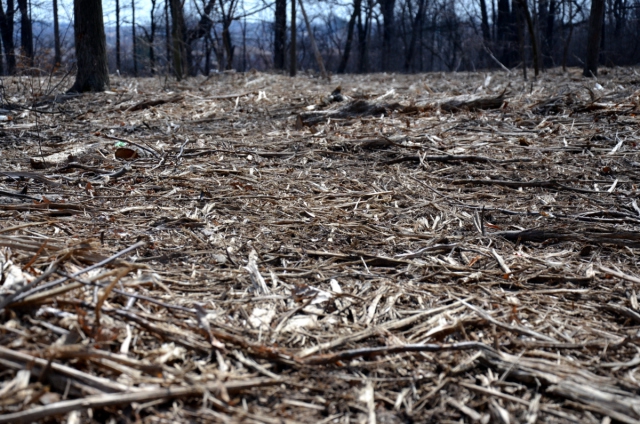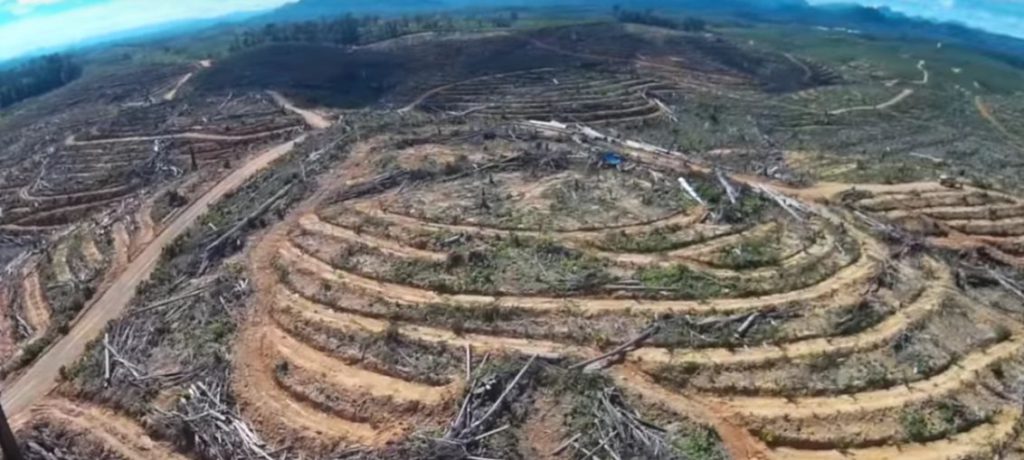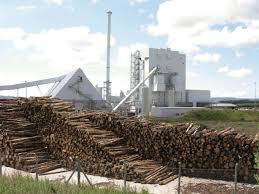Europe’s decision to promote the use of wood as a “renewable fuel” will likely greatly increase Europe’s greenhouse gas emissions and cause severe harm to the world’s forests, according to a new comment paper published in Nature Communications. The authors posit that this new directive “will lead to a vast new cutting of the world’s forests” as additional wood equal to all of Europe’s existing wood harvests will be needed just to supply 5 percent of Europe’s energy.

European officials agreed on final language for a renewable energy directive earlier this summer that will almost double Europe’s use of renewable energy by 2030. Against the advice of 800 scientists, the directive now treats wood as a low-carbon fuel, meaning that whole trees or large portions of trees can be cut down deliberately to burn. Such uses go beyond papermaking wastes and other wood wastes, which have long been used for bioenergy.
The paper also estimates that using wood for energy will likely result in an increase of 10 to 15 percent in emissions from Europe’s energy use by 2050. This could occur by turning a 5 percent decrease in emissions required under the directive using solar energy or wind energy into a 5 to 10 percent increase by using wood.
Europe’s increased wood demand will require additional cutting in forests around the world, but the researchers explain the global impact is likely to be even greater by encouraging other countries to do the same. Already, tropical forest countries like Brazil and Indonesia have announced they, too, will try to reduce the effect of climate change by increasing their use of wood for bioenergy.

Although wood is renewable, cutting down and burning wood for energy increases carbon in the atmosphere for decades to hundreds of years depending on a number of factors, the researchers explained. Bioenergy use in this form takes carbon that would otherwise remain stored in a forest and puts it into the atmosphere. Because of various inefficiencies in both the harvesting and burning process, the result is that far more carbon is emitted up smokestacks and into the air per kilowatt hour of electricity or heat than burning fossil fuels, the authors explained.
While regrowing trees can eventually reabsorb the carbon, they do so slowly and, for years, may not absorb more carbon than the original forests would have continued to absorb. This results in long periods of time before bioenergy pays off the “carbon debt” of burning wood compared to fossil fuels.
The paper also explains why the European directive’s sustainability conditions would have little consequence. Even if trees are cut down “sustainably,” that does not make the wood carbon free or low carbon because of added carbon in the atmosphere for such long periods of time.
The directive also misapplies accounting rules for bioenergy originally created for the U.N. Framework Convention Climate Change(UNFCCC). Under the rules of that treaty, countries that burn wood for energy can ignore emissions, but countries where the trees were chopped must count the carbon lost from the forest. Although this rule allows countries switching from coal to wood to ignore true emissions figures, it balances out global accounting, which is the sole purpose of those rules, and does not make bioenergy carbon free.

The system does not work for national energy laws, which will be required by the directive. If power plants have strong incentives to switch from coal to carbon-neutral wood, they will burn wood regardless of any real environmental consequences. Even if countries supplying the wood report emissions through UNFCCC, those emissions are not the power plants’ problem.
Finally, the paper highlights how the policy undermines years of efforts to save trees by recycling used paper instead of burning it for energy. Also, as the prices companies are required to pay for emitting carbon dioxide increases over time, the incorrect accounting of forest biomass Europe has adopted will make it more profitable to cut down trees to burn.
This comment raises concerns regarding the way in which a new European directive, aimed at reaching higher renewable energy targets, treats wood harvested directly for bioenergy use as a carbon-free fuel. The result could consume quantities of wood equal to all Europe’s wood harvests, greatly increase carbon in the air for decades, and set a dangerous global example.
In January of this year, even as the Parliament of the European Union admirably voted to double Europe’s 2015 renewable energy levels by 2030, it also voted to allow countries, power plants and factories to claim that cutting down trees just to burn them for energy fully qualifies as low-carbon, renewable energy. It did so against the written advice of almost 800 scientists that this policy would accelerate climate change1. This Renewable Energy Directive (RED) is now finalized. Because meeting a small quantity of Europe’s energy use requires a large quantity of wood, and because of the example it sets for the world, the RED profoundly threatens the world’s forests.
Makers of wood products have for decades generated electricity and heat from wood process wastes, which still supply the bulk of Europe’s forest-based bioenergy2,3. Although burning these wastes emits carbon dioxide, it benefits the climate because the wastes would quickly decompose and release their carbon anyway. Yet nearly all such wastes have long been used4.
Over the last decade, however, due to similar flaws in the 2008 RED, Europe has expanded its use of wood harvested to burn directly for energy, much from U.S. and Canadian forests in the form of wood pellets. Contrary to repeated claims, almost 90% of these wood pellets come from the main stems of trees, mostly of pulpwood quality, or from sawdust otherwise used for wood products5.
Comments from the Authors
Tim Beringer, Humboldt-Universität zu Berlin
“The directive reverses the global strategy of trying to subsidize countries to protect their forests and their carbon. Instead of rewarding countries and landowners to preserve forests and the carbon they store, this directive encourages companies to pay them for the carbon in their forests, but only on the condition that they cut the trees down and ship them to Europe to be burned.”
Bjart Holtsmark, Statistics Norway
“Although the directive encourages countries to harvest wood to burn, it does not require that they do. Countries should follow alternative strategies, focusing on solar in meeting European requirements for more renewable energy.”
Dan Kammen, University of California-Berkeley
“Compared with the vast majority of what counts as ‘bioenergy by harvesting wood,’ solar and wind have large advantages in land-use efficiency and lower and lower and lower costs. The focus on wood is not only counterproductive for climate change but unnecessary.”
Eric Lambin, Stanford University and Université catholique de Louvain
“Treating wood as a carbon-neutral fuel is a simple policy decision with complex cascading effects on forest use, energy systems, wood trade and biodiversity worldwide. Clearly, many of these effects have not received due attention.”
Wolfgang Lucht, Potsdam Institute for Climate Impact Research and Humboldt-Universität zu Berlin
“It makes no sense at all to save trees through recycling and then turn around to burn them for energy. There is nothing green, renewable, or environmentally friendly about that. Global forests are not disposable. The European Union should wake up and limit the role of bioenergy in the transition to renewable energies.”
Peter Raven, Missouri Botanical Society
“Any increased demand for wood as fuel will have huge negative impacts on global biodiversity because many kinds of forests throughout the world, including the most biodiverse, will also end up being cut to satisfy the endless demand locally and to send to rich countries as they exhaust their own managed forests.”
Jean-Pascal van Ypersele, Université catholique de Louvain
“European citizens once more experienced the harsh effects of global warming this summer. In the name of reversing climate change, this counterproductive policy will increase deforestation and carbon emissions rather than contribute to decreasing them. More emissions will only make the summers even hotter for decades to centuries.”